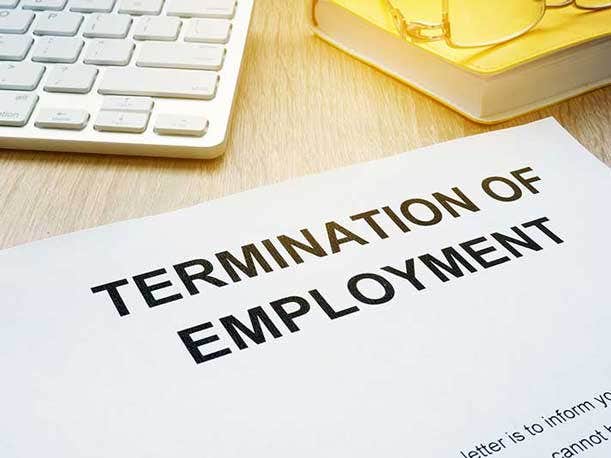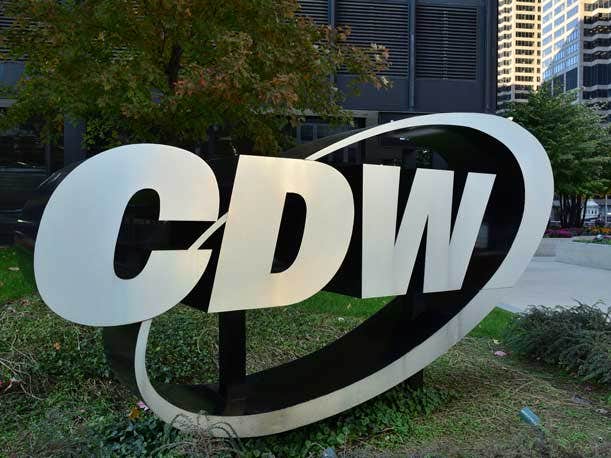CDW Layoffs: 5 Things To Know
CDW has cut employees who were with the company for more than 10 years and multiple employees involved with Digital Velocity and Microsoft Azure.

CDW’s bombshell announcement this week that it expects first fiscal quarter results below expectations and the apparent layoff of hundreds of its employees is a sign that moderated technology demand since the height of the pandemic is more than just a one-quarter strain for hardware, software and services businesses.
The Lincolnshire, Ill.-based CDW – No. 4 on CRN’s 2022 Solution Provider 500 list – has cut workers who were with the company for more than 10 years and multiple employees involved with Digital Velocity and Microsoft Azure, according to a review of posts on LinkedIn.
People familiar with the layoffs told CRN that between 3 percent and 5 percent of the company -- between 450 and 750 people -- were let go.
CRN has reached out to CDW for comment. CDW, with 15,100 employees, is slated to report its first fiscal quarter 2023 financial results on May 3.
[RELATED: ‘Sad Day’: CDW Layoffs Hit Hundreds After ‘Economic Uncertainty’ Warning]
CDW Layoffs Amid Reduced Guidance
A Wednesday report from Bank of America noted that this is “the first year of y/y revenue decline since the company went public in 2013.”
“We think the company will face headwinds over the next several quarters as Enterprise IT spend remains uncertain,” according to the report. “Most hardware companies in our coverage have indicated weak enterprise spending. A recovery of PCs in F2H23 remains uncertain while demand for data center equipment could also weaken.”
An analyst with Morgan Stanley wrote in a Thursday report that the CDW news “likely reflect[s] greater large SMB spending caution and deal downsizing/cancellations/pushouts.”
Wednesday reports from William Blair and Credit Suisse, however, were more optimistic.
“CDW’s revenue growth is tied to U.S. IT spending growth, and we continue to believe that CDW is well positioned to outperform that spending benchmark as IT spending shifts to address the future state of work and how businesses interact with customers,” according to the William Blair report. “CDW has a broad selection of vendors, and its scale drives favorable terms and allows the company to take inventory positions through its distribution facilities. While COVID-19 and chip shortages have disrupted global supply chains, similar to past periods of supply constraints, we believe that CDW management remains a strong executor and the company is well positioned to capture market share.”
The report continued to say “CDW has a well-diversified revenue base across several end-markets, which decreases the company’s risk profile. We believe that the company’s increasing success in areas that are outside but supplement client devices (including software, services, and security) is driving growth and profitability.”
The Credit Suisse report said, “We think updated guidance will fairly de-risk 2023 estimates and continue to believe CDW’s strong execution and customer relationships warrant a premium,” although CDW’s stock should “be weak until signs of improving end demand.”
Here’s what else you need to know about the layoffs.

Tech Slowdown Beyond Q1 For Vendors …
Multiple tech giants – including Microsoft, Amazon and Google – made massive layoffs at the start of the year with reduced tech demand a factor.
AT&T reported signs of businesses moderating their spending on remote working tools since the height of the pandemic during its first fiscal quarter earnings call Thursday.
The news preceded a nearly 10 percent decline in its share price and appeared to affect wireless competitors, with a 3 percent decline in Verizon’s stock price and a 2 percent decline for T-Mobile.
And not only has a weakened demand for technology been a factor, but AT&T CEO John Stankey pointed to layoffs this year also giving enterprises less of a reason to buy.
“People are making their businesses more efficient – trimming,” Stankey said AT&T’s earnings call this week. “And the wireless business is, of course, correlated to headcount. And as some businesses have done some things to trim their employee ranks, you see that flowing through on handsets and data cards and things like that.”
Stankey continued: “It’s, again, nothing that’s out of the pattern of what we expected in terms of overall growth in the industry. We still have very healthy business services growth. We feel very comfortable about our share. … We’re penetrating in segments like in the public safety area better than the market in total. All considered, that’s pretty consistent with what we expected this year.”
Lenovo has reportedly begun laying off employees as part of a roughly $115 million cost-cutting plan in response to a major downturn in its PC business.
Lenovo’s layoffs are happening after the company, which has dual headquarters in Beijing and Morrisville, N.C., said a “severe downturn” in the PC and smartphone markets caused its revenue to decline 24 percent year-over-year to $15.3 billion in its third quarter, which ended in December.
In its third-quarter earnings call, Wong Wai Ming, Lenovo’s CFO, blamed the downturn on a “confluence of global economic challenges and dynamic shifts in market demand.” This, combined with the IT giant’s hope of doubling its net margin in the next few years, has prompted the company to invest in “high-margin growth engines” and “reduce runway operational expenses” by roughly $115 million.
However, Yang said on the same call that Lenovo believes the PC market could “stabilize sooner than many expect,” with the possibility that PC sales could end up growing at a faster rate compared to 2019, before the COVID-19 pandemic prompted an unprecedented IT spending spree.
“While the PC market still needs some time to digest the inventory to a healthier level, we believe total shipments are likely to stabilize at a higher than pre-pandemic level as early as the second half of this year,” Yang said back in February.
Research firm IDC reported in its latest PC market report earlier this month that Apple shipped 4.1 million Macs in the first quarter, 40.5 percent fewer than it did the same period last year. This resulted in Apple seeing the largest year-over-year decline in PC shipments in the first three months of 2023 compared to its four largest competitors: Lenovo, HP Inc., Dell Technologies and Asus.
Palo Alto, Calif.-based HP, by contrast, took the smallest hit to PC shipments in the first quarter with a 24.2 percent year-over-year decline, resulting in 12 million units for the period.
TD Synnex’s first fiscal quarter 2023, which ended Feb. 28, was a mixed bag for the world’s largest IT distributor. The company, with dual headquarters in Fremont, Calif., and Clearwater, Fla., reported revenue of $15.1 billion, up 1 percent in constant currency.
At the same time, TD Synnex, formed in September 2021 from the merger of Tech Data and Synnex, provided second fiscal quarter 2023 revenue guidance of between $14.0 billion and $15.0 billion, which is down from the actual second fiscal quarter 2022 revenue of $15.5 billion.
Dell Technologies Thursday cautioned in March that it sees macroeconomic headwinds impacting its business in its upcoming fiscal year.
“Underlying demand in PCs and servers remains weak, and we are seeing signs of changing customer behavior in storage,” Chuck Whitten, Dell’s co-chief operating officer, told analysts on the company’s conference call at the time. “Though Q4 was a very good storage demand quarter, we saw lengthening sales cycles and more cautious storage spending with strength in very large customers offset by declines in medium and small business. Given that backdrop, we expect at least the early part of FY24 to remain challenging.”

… And In Consulting
IBM, which announced its first-quarter earnings Wednesday, reported a “deceleration” and “weakness” in its consulting business but said that software demand remained “very steady.”
IBM CEO Arvind Krishna said on the earnings call that in the U.S., IBM “did see some slowing down in consulting projects,” but no project cancellations.
“I want to caution that weaknesses are shrinking,” he added. “Double-digit rates just went down into 6 to 8 percent, which is still healthy.”
He believes the consulting slowdown could spread globally, but it should not spread into the software segment.
“A lot of our software is running critical systems for our clients,” Krishna said. “And we don’t see those very subject to what we see in the current macroeconomic environment. And so that’s what gives us confidence.”
In March, Accenture announced the layoff of 19,000 employees. Although the solution provider giant – No. 1 on CRN’s 2022 SP500 – credited the layoffs to an effort to “streamline our operations and transform our non-billable corporate functions to reduce costs” after an acquisition spree, the company also reduced guidance for expected revenue growth for all of fiscal 2023 to 8 percent to 10 percent in local currency, compared to its earlier guidance of 8 percent to 11 percent.
In February, Cognizant reported that its net income fell 9.6 percent year over year in its fourth fiscal quarter to $521 million.
Total revenue for the quarter, however, grew 4.1 percent year over year ignoring foreign exchange. And net income for the 2022 fiscal year grew 7.2 percent year over year to $2.29 billion.
Full year revenue grew 7.5 percent to $19.4 billion. Full year free cash flow was $2.2 billion.
The solution provider – No. 7 on CRN’s 2022 SP500 list – forecasted that the first quarter of its 2023 fiscal year will see between a 1 percent decrease or, at best, flat year-over-year growth ignoring foreign exchange.
The company said it “is not providing full-year guidance at this time and intends to provide an update in its next earnings release in early May.”
Cognizant lowered annual guidance for the third straight quarter during its third fiscal quarter, according to The Economic Times. The company forecasted annual guidance of $19.3 billion.
In March, IT consultancy firm Thoughtworks announced the layoff of 500 employees, 4 percent of its global workforce. It also forecasted sales for its current first quarter 2023 of between $303 million and $305 million, which would reflect a year-over-year sales decline of between 5 percent and 5.5 percent.

Not CDW’s First Layoff
CDW previously conducted layoffs in September 2020, according to a Crain’s article from the time.
CDW cut 2 percent of its workforce at the time, according to Crain’s. With 7,600 employees in the U.S. and 9,900 workers worldwide, the number of employees cut was likely between 150 and 200 people.
However, the 2020 layoff came during tech’s boomtime of customer purchasing at the height of the pandemic.
Preceding the cut, CDW saw sales drop 6 percent year over year in the second quarter, according to Crain’s. Profit dropped 4 percent, corporate sales 17 percent and small business sales 20 percent. U.S. personal computer sales had risen that quarter by 3.5 percent.

Veteran Workers Cut
Multiple LinkedIn users posted to the social media network to say they were swept up in the CDW layoffs.
The employees were in a variety of locations with multiple veteran employees cut and multiple people involved with Microsoft Azure and in CDW’s Digital Velocity team, according to a review of those LinkedIn posts.
The posters include:
*A senior inside solution architect for Azure who was with CDW for more than 16 years
*An advanced technology account executive with CDW for about six years on and off
*A Digital Velocity business development manager with CDW for almost seven years
*An Azure principal solution architect with CDW for about 15 years
*An inside solution architect with CDW for almost two years
*A senior sales solution architect for Microsoft Azure with CDQ for about 15 years
*A senior consultant who worked on Azure assessments, Azure jumpstart engagements and Azure migration – among other projects – who spent at least eight years with CDW on and off
*A principal field solution architect who worked with the Digital Velocity Cloud and Cloud Native Solutions team and worked at CDW for about 16 years
*A team lead and senior client success manager for the Digital Velocity team with CDW for less than a year
*A client computing solutions category manager who was with CDQ for more than 12 years
*A sales operations supervisor with CDW for about 12 years
*A field solutions architect with CDW for about a year

CDW Was Spending Leading Up To Layoffs
The layoffs also come about two months after CDW acquired Locus Recruiting, a consulting firm that specializes in information security, cloud computing, networking and infrastructure.
On Feb. 8, CDW reported earnings for for its fourth fiscal quarter and full 2022 fiscal year.
The quarter saw $5.4 billion in net sales, a 1.8 percent decline year over year. The year saw $23.7 billion in net sales, a 14.1 percent increase year over year.
Gross profit for the quarter was $1.2 billion, up 21.1 percent. Gross profit for the year was $4.7 billion, up 31.3 percent.
Net income for the quarter was $287 million, up 33.4 percent. For the year, net income was $1.1 billion, up 12.7 percent.
The company’s CEO saw her total pay package rise along with the fortunes of the company last year.
According to CDW’s 2023 proxy statement, CEO Christine Leahy received total compensation of $11.12 million for the fiscal year ended Dec. 31, up from $8.9 million the year before.
That compensation included $985,000 in base salary, $3.5 million in stock awards, $3.5 million in option awards, $2.9 million in non-equity incentive plan compensation and $194,000 in other compensation.
The median of the annual total compensation of all workers other than Leahy was $107,403, making a 103-to-1 ratio.